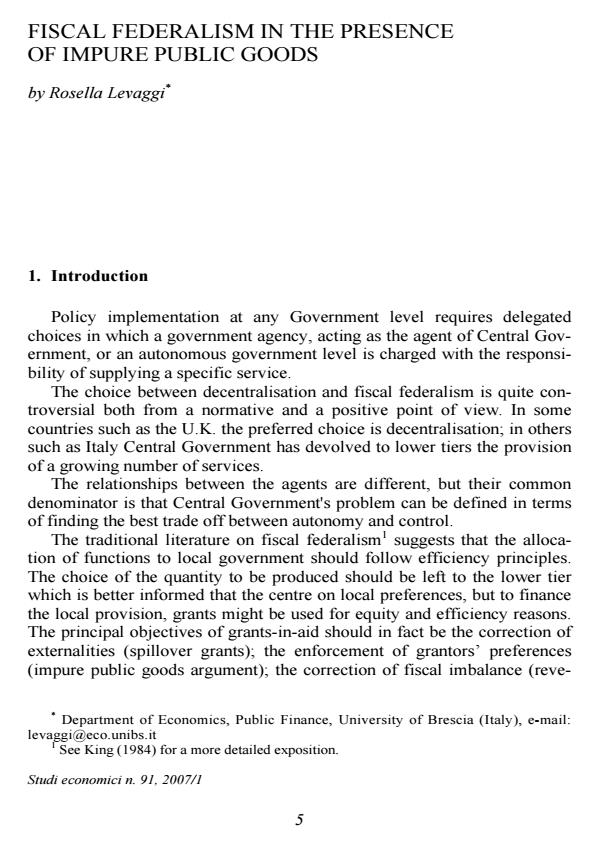Fiscal Federalism in the presence of impure public goods
Titolo Rivista STUDI ECONOMICI
Autori/Curatori Rosella Levaggi
Anno di pubblicazione 2008 Fascicolo 2007/91 Lingua Inglese
Numero pagine 19 P. 5-23 Dimensione file 238 KB
DOI
Il DOI è il codice a barre della proprietà intellettuale: per saperne di più
clicca qui
Qui sotto puoi vedere in anteprima la prima pagina di questo articolo.
Se questo articolo ti interessa, lo puoi acquistare (e scaricare in formato pdf) seguendo le facili indicazioni per acquistare il download credit. Acquista Download Credits per scaricare questo Articolo in formato PDF

FrancoAngeli è membro della Publishers International Linking Association, Inc (PILA)associazione indipendente e non profit per facilitare (attraverso i servizi tecnologici implementati da CrossRef.org) l’accesso degli studiosi ai contenuti digitali nelle pubblicazioni professionali e scientifiche
Fiscal Federalism in the Presence of Impure Public Goods (by Rosella Levaggi) - ABSTRACT: The traditional theory for fiscal federalism assumes that the lower tier is more efficient in producing local public goods because of information asymmetry, while on the finance side Central Government might be more efficient in raising resources that will then be distributed through grants-in-aid. This scheme does not take into account that services produced at local level are usually impure public goods and that Central Government might want to pursue other objectives instead of a straight maximisation of social welfare. Based on the modelling structure is based on Lancaster’s characteristic approach as applied to impure public goods by Cornes and Sandler (1994), the model developed in this paper allows to derive grants-in aid distribution formulae in this environment and a set of rules that allows to establish when fiscal federalism is a superior alternative to decentralisation. Keywords: Flypaper Effect, Grants-in-aid, Re-election
Rosella Levaggi, Fiscal Federalism in the presence of impure public goods in "STUDI ECONOMICI " 91/2007, pp 5-23, DOI: